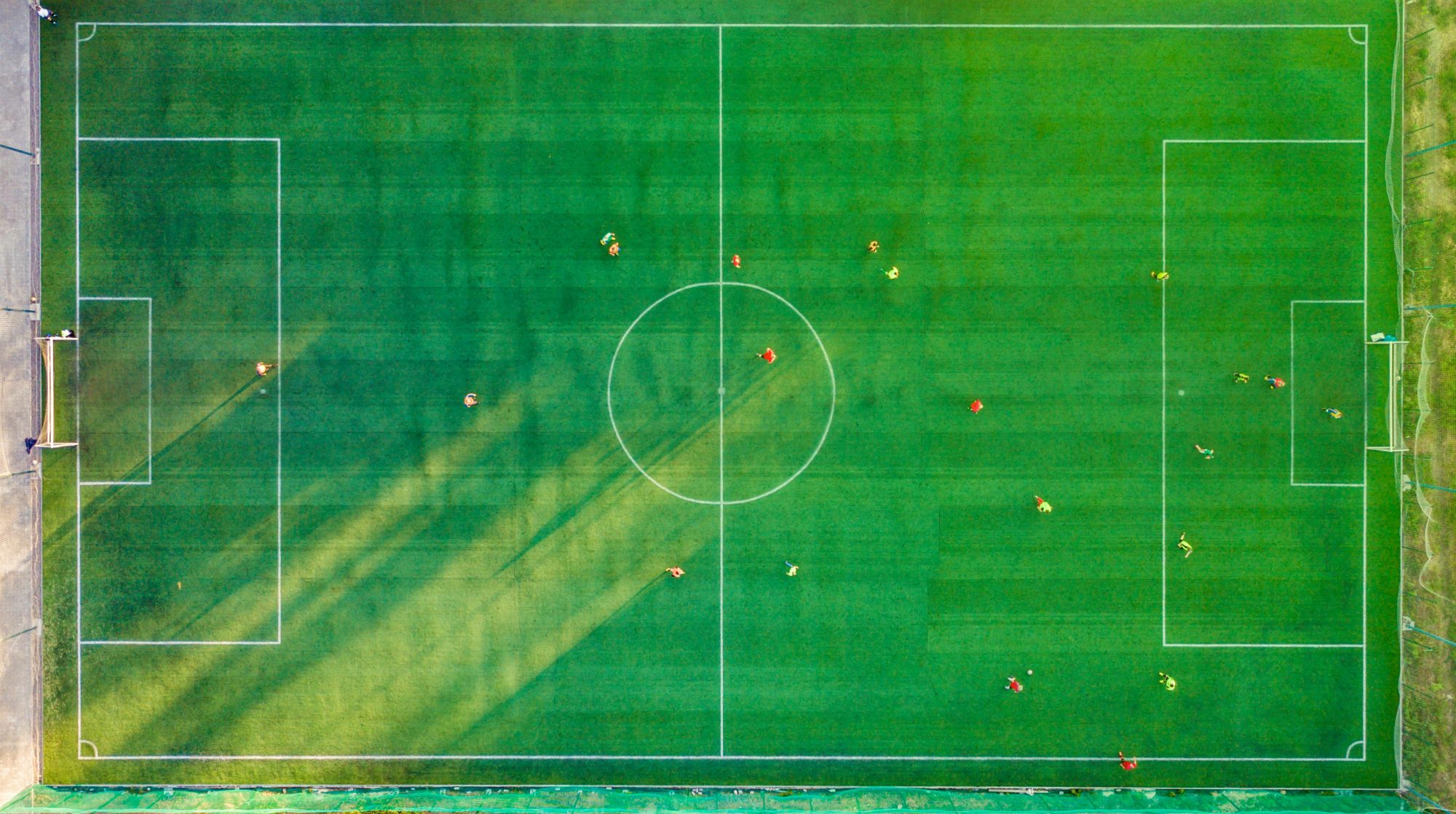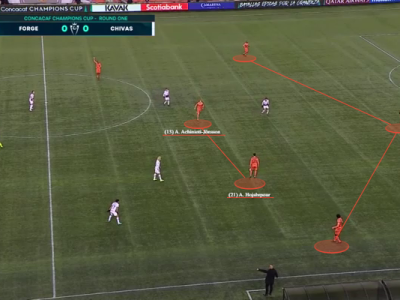In all of our latest Tactical Theory pieces, we’ve discussed the importance of scanning the field and recognizing the situation, in order to best understand how to filter information and adapt. Each situation in football is unique, and that means every player must endeavour to scan the field at every turn, allowing for appropriate adjustments to each specific situation in the quest to properly perform the next action. But beyond the act of scanning the field, players must have a keen understanding of their own teammates’ strengths and weaknesses, and how they can tailor their play to meet the needs of those teammates. That allows the act of scanning to be taken to the next level, where players are not just aware of the situation, but know how to perform the next action to perfection.
the importance of recognizing strengths
Embed from Getty ImagesThe various strengths and weaknesses of a teammate may include a range of physical, tactical, technical and psychological factors. Certain players may have predisposed limitations in physical or even psychological components to the game, but these limitations can be completely disregarded if their teammates can learn how to adjust. We discussed this at length last season with Harry Maguire’s lack of pace, and how Manchester United could have adapted in a variety of ways under Ralf Rangnick to better support the strengths of the evidently talented centre-half they have at their disposal.

We’ve also mentioned Marco Bustos in nearly every single one of our latest Tactical Theory pieces, and for good reason. He’s an astutely aware player that can pull off insane feats of magic on the drop of a dime. But this awareness manifests in large part due to his understanding of his teammates, including both their strengths and weaknesses. Crucially, having played with several of them for more than a few seasons now, his mates have also found the best mechanisms for allowing the flamboyant winger to shine. Take this example from Pacific FC’s recent win over Valour in the CANPL. Just press play and the clip will show up in the exact spot we want you to see!
Bustos receives the ball down the line, and anyone who knows the Canadian winger will know that he loves to cut onto his left foot. With a shimmy and a shake, that’s exactly what he does, creating half a yard of space for himself to deliver the cross. But it’s what happens next that achieves the golden standard of brilliance both on his behalf and that of Alejandro Diaz, who finishes off the chance.

Diaz starts his run in between centre-backs, and as soon as Manny Aparicio plays the pass out wide, the centre-forward re-orients his body to face the direction of the play. The second Marco Bustos cuts inside and shapes up for the cross, Diaz then makes his move. His aim is to get in front of the defender, knowing that he’s coming up against the hulking 6’2 defender Andrew Jean-Baptiste, and likely won’t beat him in the air.

Bustos must also adjust to the needs of his 5’10 teammate, recognizing the height disparity he’s faced with. Like Diogo Jota, Alejandro Diaz thrives in the air due to his excellent timing of the leap, and timing of movement into space. But his teammates play a crucial role in catering to that ability, whilst working to mitigate the potential weakness that his height may provide up against taller, stronger defenders. So Bustos’ cross remains low, allowing Diaz to receive in an uncontested duel, that he does not need to leap to receive. With his expert finishing ability, the finish is then easy, right in the corner and out of sight of Jonathan Sirois.
Having a player of Diaz’s quality means that players can constantly put dangerous passes into the penalty area, even at times without fully scanning the situation.
They know the Mexican will time his run into the box to perfection, and easily tap in the finish if the pass has the right amount of pace and accuracy.
Let’s now put this into practice. Consider your team. Maybe it’s a team you coach, or a team that you love to watch play. How can you use the strengths of two of your players to accommodate for one another, and play to the strengths of both players simultaneously? Think Bustos and Diaz, and how they excellently adjust for each other in the goal against Valour. How can you do the same? Or how can players on your favourite team do the same?
Still stumped? Well, the same idea wonderfully came to light in yesterday’s Euro 2022 Final between England and Germany, where Keira Walsh excellently read the situation to match her teammate’s exceptional timing of the run.

Under pressure, as she always does, Walsh excellently used her first touch to take defenders out of the game. Then with her second action, she eliminated every single defender to ever live for Germany, finding Ella Toone in the perfect pocket of space. That awareness comes from astute scanning the field to assess the situation (as you can see Walsh evaluating Toone’s movement before playing the pass), and then responding based on that information.

Walsh’s first look upon receiving the ball is always forward, trying to find one of her advancing runners in space. Her teammates recognize this, and will instantly burst forward when they see her with time and space on the ball. Beyond the goal-scorer in Toone, look at the way Russo is already on the move as soon as she sees Walsh with her head up. This is the kind of recognition and awareness of teammates’ strengths that every coach should strive for. When you have a player with the quality of Walsh, you can smartly adjust in different circumstances to achieve different outcomes.
Embed from Getty ImagesIn training, players must then become hyper-aware of the strengths and weaknesses of their teammates, and learn how to accommodate for those features. This may sound complicated, but with the right level of attention, this can even be done on short notice (such as international play, where less time is given for the players to train together).
Embed from Getty ImagesThen if players can accomplish this seemingly difficult feat, they will be able to more appropriately adjust for circumstances that occur in the evolution of a game, and pull off feats of magic like Bustos and Walsh. It starts with that process of scanning and reading the situation, but must be developed over time as relationships form in training. So for any player reading this article, or even for all the coaches out there, start to recognize the strengths and weaknesses of your players, and how they can more adequately adjust for one another.
So there it is! The importance of recognizing and playing to your teammates’ strengths in football. Be sure to check out more of our Tactical Theory pieces, and our coverage of CANPL + Women’s Football content. Also be sure to give us a follow @mastermindsite all over social media, and consider joining our upcoming Introduction to Analysis course if you love this kind of content. Thanks for reading and see you soon!

This article is part of our Introduction to Football Analysis – Online Course with Rhys Desmond. See what else is in store for the course and navigate to the next section below.
See the entire course curriculum and jump around by visiting:
Introduction to Football Analysis – Online Course with Rhys Desmond
YOU MIGHT ALSO ENJOY…
Chaos vs. Control: A Collision of Principles
Some like to approach games in a disciplined structure, intentionally and meticulously dictating games to their own tempo. Others opt for a more emotionally-charged philosophy, reliant on the belief, energy and willpower of their trusted eleven on the field.
Game of Numbers #37 – Forge FC’s use of centre-backs in midfield like Manchester City
For the unfamiliar, Forge FC are the Manchester City of the Canadian Premier League. They play a possession-based 4-3-3, stacked with ball-savvy savants, and a culture that embodies winning. The Canadian Premier League’s been around since 2019 now. Forge have won the Playoffs in four of the five seasons, and lost the final in the…
Why centre-backs are becoming fullbacks: The tactical trend that defined 2023
It might be wrong to credit this tactical approach to Pep Guardiola. After all, the origin story to the ‘fullback’ is because the defender was fully back. However, in operating with a centre-back that steps up into midfield, Guardiola also created a construction within his team that regularly positioned centre-backs out wide. From then on,…





8 thoughts on “Recognizing and playing to your teammates’ strengths in football”